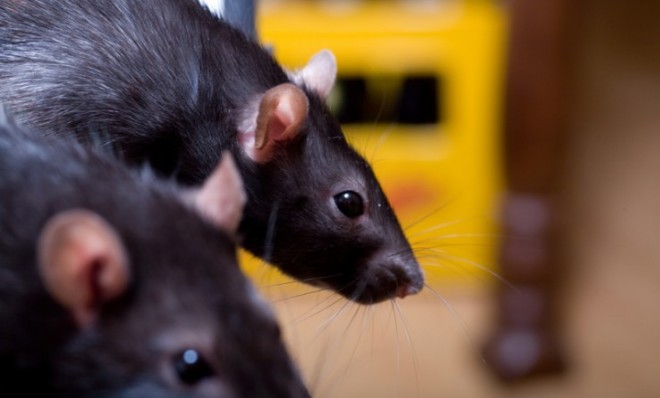How scientists made rats communicate with just their minds
Duke University researchers successfully test brain-to-brain technology. I know what you're thinking...

Brain-machine interfaces are nothing new. Lab monkeys have spent the last few years controlling robotic arms with their thoughts, and last December, a paralyzed woman was able to feed herself using just her mind and some cutting-edge tech.
But now, for the first time ever, neuroscientists from Duke University have successfully connected the brains of two living things: Two rats, sometimes miles apart, connected at the head by a simple electrode one hundredth the thickness of a human hair. Even when held in separate chambers, one rat could beam new information to the other, no squeaking necessary.
How'd they do it? First, both rats were trained to learn that in order to get a sip of water, they would have to press the correct lever, which was designated by an indicator light. Then, scientists designated one the encoder rat, and the other the decoder rat, putting them in separate enclosures and connecting their brains with microelectrodes.
The Week
Escape your echo chamber. Get the facts behind the news, plus analysis from multiple perspectives.

Sign up for The Week's Free Newsletters
From our morning news briefing to a weekly Good News Newsletter, get the best of The Week delivered directly to your inbox.
From our morning news briefing to a weekly Good News Newsletter, get the best of The Week delivered directly to your inbox.
Whenever the encoder rat pressed the correct lever, its brain activity was sent in the form of electrical stimulation to the decoder rodent. Meanwhile, the decoder rat was presented with the same set-up but without a light to indicate which lever would produce the reward.
Researchers discovered that by attaching the rodents' brains in the area of the cortex responsible for motor information, scientists found the encoder rat could "train" its decoder pal to hit the correct switch from far, far away.
To be sure, the thought-beaming process wasn't easy. The rats trained one hour a day, for 45 days straight before they were successful. And the decoder rat only hit the correct switch 70 percent of the time. "There is a moment in time when... it clicks," researcher Miguell Nicolelis tells BBC News. "Suddenly the [decoder] animal realizes: 'Oops! The solution is in my head. It's coming to me' and he gets it right."
And here's a scary thought: Researchers are optimistic that the same neural principles can one day translate to humans. That means in the future, we may have the ability to share our thoughts directly with those closest to us, at least as long as we share a tethered (and invasive!) brain implant.
A free daily email with the biggest news stories of the day – and the best features from TheWeek.com


